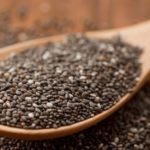The Cyclamen, or Sowbread, is a long-living plant with a unique life cycle. Its flowers boast a vibrant array of colors and emit a delightful fragrance. Join us as we delve into the captivating world of this extraordinary plant!
1 What is Sowbread?
Origin and Significance of Sowbread
Sowbread, scientifically known as Cyclamen, belongs to the Primrose family, signaling the arrival of spring with its blooming flowers. It originates from the Mediterranean region, Southern Europe, Central Asia, and Africa.
 Origin and Significance of Sowbread
Origin and Significance of Sowbread
Sowbread is often regarded as a regal and elegant plant, symbolizing sophistication, refinement, and nobility.
Feng Shui Significance of Sowbread
Sowbread is a symbol of good fortune. It is believed that owning this plant brings happiness and joy to the household. Additionally, it represents shyness and lack of confidence in romantic pursuits.
 Feng Shui Significance of Sowbread
Feng Shui Significance of Sowbread
Characteristics of Sowbread
 Characteristics of Sowbread
Characteristics of Sowbread
Sowbread is a long-day plant with a relatively fast growth rate, thriving in colder climates. It grows close to the ground, reaching heights of 30-36 cm. Its leaves are heart-shaped and dark green, while its flowers exhibit a stunning range of colors, including yellow, red, white, pink, deep pink, and purple.
2 Benefits of Sowbread
Health Benefits
The tubers of Sowbread possess medicinal properties, particularly in treating scars left by smallpox. They can be made into an ointment and applied directly to the skin. Additionally, the tubers can be ground into a powder and used in baking, offering various health benefits. The leaves can also be consumed raw or brewed into a tea, providing nutritional value.
 Health Benefits of Sowbread
Health Benefits of Sowbread
3 Sowbread Cultivation and Care
Growing Sowbread at Home
Sowbread can be grown from seeds, with a germination period of 21-25 days. Alternatively, it can be propagated from tubers, either planted directly in the ground or in a pot with drainage holes, resulting in faster growth compared to seed germination.
 Growing Sowbread at Home
Growing Sowbread at Home
Caring for Sowbread
 Caring for Sowbread
Caring for Sowbread
- Water: Water in the morning, maintaining adequate moisture in the air and soil. Aim for a minimum of 60% humidity during the day and a maximum of 85% at night.
- Soil: Use well-drained, moist, and nutrient-rich soil. Avoid overwatering to prevent waterlogging.
Notes on Sowbread Cultivation and Care
 Notes on Sowbread Cultivation and Care
Notes on Sowbread Cultivation and Care
- Provide shade during the day to protect the plant from direct sunlight, as high temperatures can cause leaf wilting.
- Avoid cutting the tips, as this may cause tuber rot. Do not cover the tubers with soil or apply fertilizer directly to them.
- Replace the plant if the stems become soft and rotten. Remove wilted or yellow leaves promptly.
- Do not add coffee grounds to the pot, and ensure the pot remains clean and well-ventilated.
4 5 Beautiful Images of Sowbread
 Sowbread in Bloom
Sowbread in Bloom
 The Beauty of Sowbread
The Beauty of Sowbread
 Sowbread as Ornamental Plant
Sowbread as Ornamental Plant
 Sowbread Brings Good Luck
Sowbread Brings Good Luck
 Sowbread for Home Decor
Sowbread for Home Decor
We hope you enjoyed learning about Sowbread! With its beauty and symbolism, it makes a wonderful addition to any home. Why not add a touch of elegance and good fortune to your living space with this fascinating plant?




































